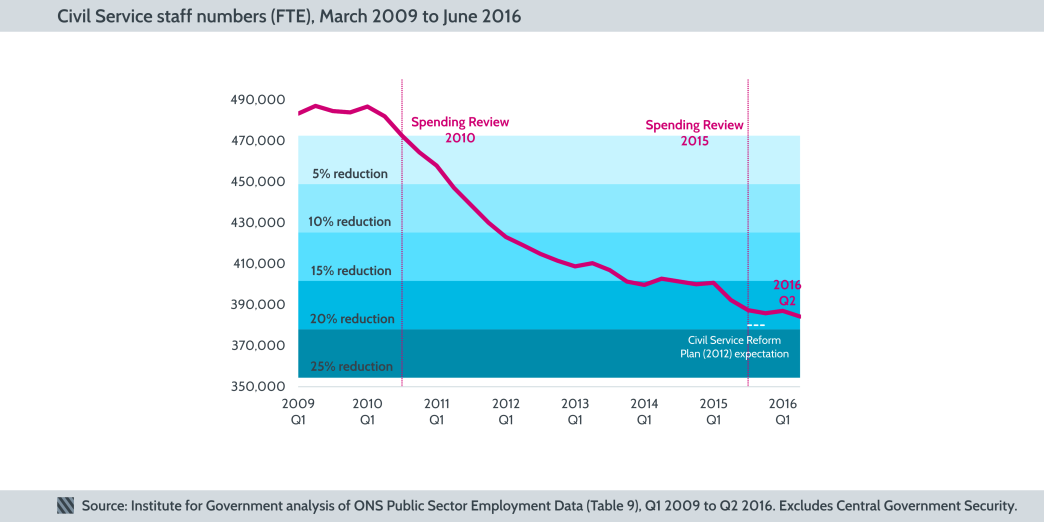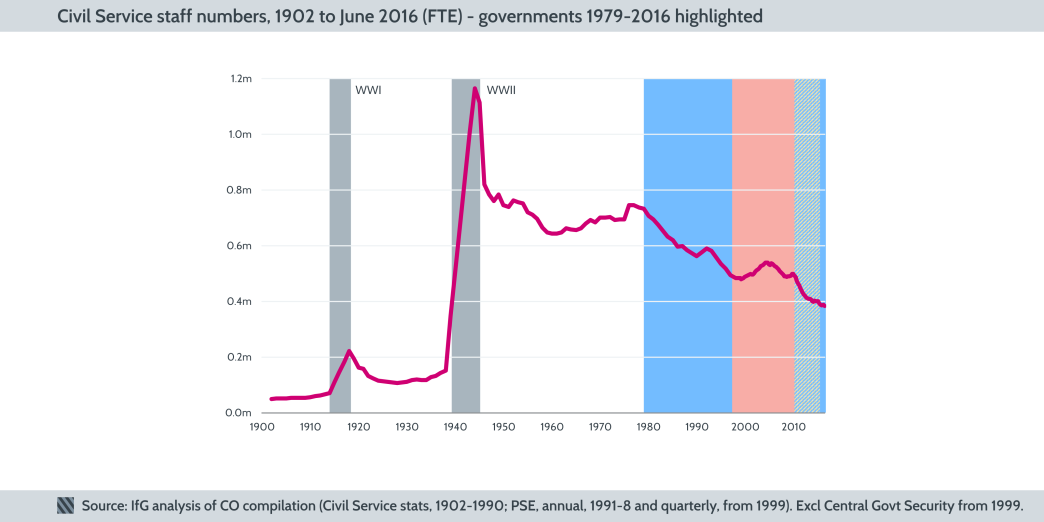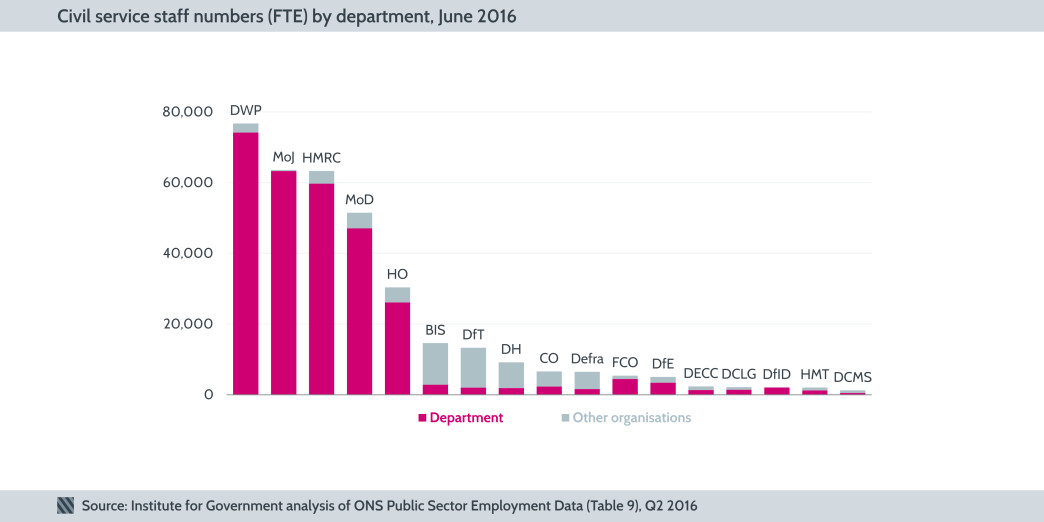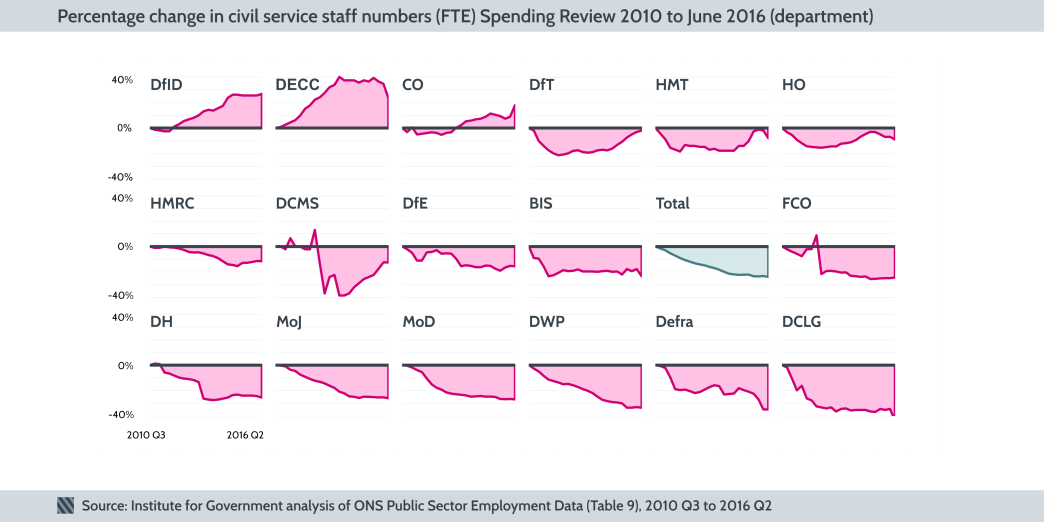Civil Service staff numbers Q2 2016: how big is Whitehall as it prepares for Brexit?
The latest Civil Service staff numbers are out, taking us to the end of June, the month of the EU referendum
The latest Civil Service staff numbers are out, taking us to the end of June, the month of the EU referendum and before Theresa May formed her new government. Adam Boon looks at what they tell us about Whitehall’s ability to manage Brexit.
The challenge Brexit poses for the Civil Service is huge – the scale has been likened by some to the Second World War. Today’s figures provide a snapshot of staff numbers in Whitehall at the end of June, just as the Civil Service was about to grapple with this challenge. Central Government Security staff numbers are no longer included by the ONS, as of this quarter – we have therefore updated our charts showing staff numbers over time to exclude those numbers back to 1999. Civil Service staff numbers continue to fall 


- DWP, MoJ, HMRC and MoD remain the largest departments.
- BIS and DECC have now merged to form the Department for Business, Energy & Industrial Strategy (BEIS). If the size of BEIS is a straightforward combination of BIS and DECC, it will be the sixth largest departmental group.
- Defra staff numbers stabilised in the second quarter of this year after recent sharp falls.
- The Cabinet Office has seen a 9% increase in staff – the largest departmental increase since March. This upward trend in Cabinet Office numbers has been a feature of recent months.
DCLG sees reduction of 40%, while DfID surpasses DECC as the department with the largest increase since 2010 
- A 13% decrease in DCLG staff has pushed post-2010 reductions to just over -40%.
- DWP and Defra were, until recently, on a sharp downward trajectory – but the numbers are now holding relatively steady.
- DfID has seen the largest increase of any department since 2010, with a cumulative increase in staff of 27%.
This post was updated on 23 September to clarify that Central Government Security staff numbers are no longer included in ONS headcount numbers.
Note: Numbers for the new departments (the Department for Business, Energy & Industrial Strategy; the Department for International Trade; and the Department for Exiting the European Union) will be available in December 2016.
- Topic
- Civil service
- Keywords
- Civil servants Civil service reform
- Position
- Cabinet secretary
- Department
- Cabinet Office
- Tracker
- Whitehall Monitor
- Publisher
- Institute for Government